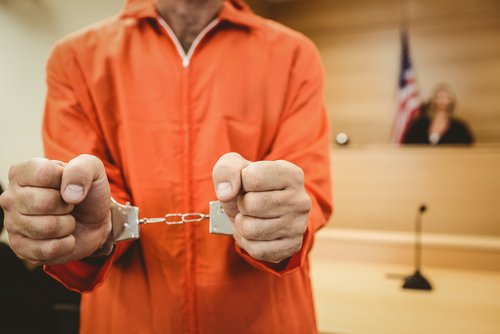 Catastrophes in the complex, coupled, criminal justice systems
Catastrophes in the complex, coupled, criminal justice systems
Jake Monaghan
Catastrophes, like the nuclear meltdowns at Chernobyl or Three Mile Island, happen despite the various safety systems put in place to prevent them. In some cases, activating a safety device exacerbates the catastrophe. This happens because, in the words of sociologist Charles Perrow, they make systems more complex and more tightly coupled (Perrow 1984). When a system is complex, it has many interacting subsystems. When tightly coupled, its subsystems depend on one another to function. In a complex, coupled system, the failure of a subsystem can cause failure in another, resulting in a cascade of failures. Even seemingly trivial failures can result in catastrophe.
Political systems, like nuclear reactors, are complex and coupled. They are made up of a variety of nested subsystems. Many subsystems interact in surprising ways. Just as a safety subsystem in a nuclear reactor can contribute to a system failure, safety subsystems in political systems can too.
This has important upshots for political philosophy. Since political systems are complex and tightly coupled, idealized theorizing about basic structures is potentially misleading. If we are in the realm of non-ideal theory, it may be impossible to screen off elements of political society as unimportant for justice and legitimacy. If we want to remain in the realm of ideal theory, it may require idealizing away a surprisingly large and methodologically unattractive amount of reality. It also entails that role-based obligations in one subsystem are partly determined by facts about other subsystems. Consider the criminal justice system as an illustration.
The whole political system is complex and tightly coupled. Legislation determines policing resources, what will be criminalized, and how crimes will be punished. Criminal system outcomes partly determine who participates in the electoral and legislative processes as well as who has economic opportunity and social capital and to what extent. The criminal justice system itself is made up of a variety of other subsystems: police, decisions about which cases to prosecute, what plea bargain to offer, bail hearings, trials, sentencing hearings, pre- and post-trial detention, probation, and so on. Each of these subsystems are made of a variety of parts, many of which are characterized by a significant discretion. This is a recipe for surprising interactions. It is also a recipe for possible catastrophe.
Let’s start with the decision to make a traffic stop. The patrol officer makes a decision about which traffic violations to pursue. From there, they make a decision about whether to pressure the motorist into consenting to a search. Suppose the officer finds what could be cocaine and uses a field drug test to evaluate the substance. Or, suppose that the officer suspects the motorist matches the description of a suspect in a recent misdemeanor crime. All of these decisions have a substantial possibility for error. Let’s imagine that the field drug test or the eye witness descriptionfails and the innocent motorist is arrested.
No problem, we might think, because the District Attorney’s office will review the case to decide whether to decline or prosecute. Unfortunately, junior prosecutors often screen low-level felony or misdemeanor cases, and therefore lack perspective on which cases are truly worth prosecuting (Natapoff 2018). This results in fewer declinations than justice might require. The adversarial trial system ought to handle this concern. Unfortunately again, if a defendant is not offered or can’t afford bail, by the time they go to trial, they may already have been incarcerated for as long as their guilty verdict would require. Further, prosecutors can pressure defendants into accepting a plea deal by manipulating the expected utility of turning down the deal (Alschuler 2017).
Suppose the case goes to trial anyway. The public defender system is woefully underfunded. Few public defenders have the time or resources to aggressively challenge evidence. Prosecutors who are annoyed that their plea deal was declined may not only stack charges but request stiffer penalties. If the judge is unsympathetic, they may agree to those stiffer penalties. So, unless a defendant is lucky, going to trial is a risk rarely worth taking. This accounts for the rarity of trials and the surprising number of false admissions of guilt.
At least, we might think, the punishment won’t be all that severe. But if the local Sheriff’s agency fails, as they so often do, jail can be dangerous and disgusting. Homicide and suicide together account for almost 10 percent of jail deaths. Assault and insufficient medical care are common as well. The punishment does not end there. Individuals with misdemeanor or felony records can have a harder time finding employment and being admitted to higher education and can lose public benefits. This can diminish economic opportunity. If rational choice models of crime are to be believed, this increases recidivism rates. Interactions with the criminal justice system also reduces political participation, thus feeding back into the legislative processes that fund and staff the criminal justice system as well as determine what counts as crime (Weaver and Lerman 2010).
Political preferences are fickle. Preferences for “tough-on-crime” policies appear to be unrelated to their success or crime rates. Decisions about how to allocate police resources will affect who gets caught up in the system. Decisions about how to allocate resources to prosecutors, public defenders, jails and prisons, or even social welfare programs will affect who enters the system and how they’re treated when they’re in it.
An easy example of a tightly coupled system is falling dominos; knock one over, and the rest are likely to fall. Because the criminal justice system (and the broader political system) is tightly coupled, a series of seemingly small errors in the criminal justice system as described above resembles cascading dominoes. But the cascade culminates in gross injustice instead of fun.
To conclude, consider the Baltimore City Fraternal Order of Police’s recent criticism of the police commissionerfor suggesting that solving the city’s violent crime problem requires looking at “root causes.” In their view, the commissioner needs to simply “win the battle,” presumably by aggressively cracking down on crime. Because the criminal justice system is complex and tightly coupled, such role-based compartmentalization could lead to catastrophe. Idealizing away crime and the police when theorizing about justice and legitimacy thus results in inadequate theories.
References
Albert W. Alschuler. 2017. “A nearly perfect system for convicting the innocent.” University of Chicago Public Law & Legal Theory Paper Series, No. 612.
Charles Perrow. 1984. Normal Accidents: Living with High Risk Technologies. Basic Books.
Alexandra Natapoff. 2018. Punishment without Crime: How our Massive Misdemeanor System Traps the Innocent and Makes America More Unequal. Basic Books.
Vesla Weaver and Amy Lerman. 2010. “Political consequences of the carceral state.” American Political Science Review. 104 (4): 817-833.


Thanks for posting this, Dave!
This is a nice description of the way various features of the criminal justice system interact to produce mass incarceration. A propos of the FOP’s response, I’d say that I think a return to the 60s and 70s “root cause” model of dealing with crime is a complete nonstarter politically. Much better to focus on electing progressive prosecutors like Chesa Boudin in SF, eliminating cash bail, and so on. Re: the latter, it is a problem when prosecutors stack charges or overcharge, but if cash bail is gone, and if fewer folks are railroaded into pleas (something like 95% of all criminal cases are plead out), the courts will be inundated with cases and will become just a bit more defendant-friendly.
Thanks for your comment, Benjamin!
I agree that “root cause” criminal justice system reforms are a non-starter. I’m pretty pessimistic about the political viability of most criminal justice reform strategies. Prosecutors have quite a bit of power, so electing progressive prosecutors is a great area to focus on. But we’ll see whether that reform strategy has any longevity. It’s only been days since bail reform took place in New York and there is already quite a bit of public backlash. I will not be surprised if cash bail quickly makes a comeback there.
I mention the FOP’s response largely because it is an example of what I think is the mainstream view about role-based obligations in criminal justice, which is to ignore adjacent aspects or “subsystems.” If we drop that assumption, then we have to think about normative principles to guide police and prosecutor discretion (about when to makes arrests, when to decline cases, etc.).
Sounds depressing. Massachusetts attorney general Rollins won’t prosecute a number of “misdemeanors” (shoplifting, breaking and entering first offense, disturbing the peace, street violence). Police are not happy. Thanks for the article.